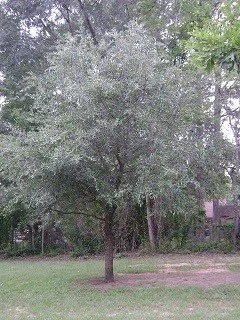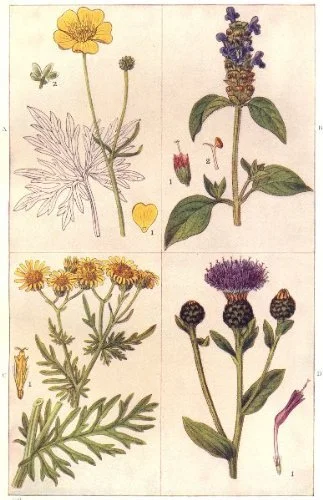For allergy sufferers, spring is usually a time of sniffling, sneezing, and watery eyes.
One reason for this is pollen from flowers of trees, shrubs, grasses, and weeds. Although most of these bloom for just a short period, something is almost always blooming. In early spring, it's the trees and shrubs. In summer the main pollen source is flowering grasses. In late summer and fall, weedy plants from roadsides are the problem.
Pollen is an important part of plant reproduction and must be moved around from flower to flower. Showy flowers attract insects such as bees, which help pollinate the flowers, but not all plants use insects.
Most plants that cause allergies use wind to spread their pollen. Therefore, these plants typically have abundant pollen and not very noticeable flowers.
Fortunately, not all pollen causes allergies. Ample research has been done in this area to determine which plants are the culprits.
Allergenic trees are usually a problem from March through May and include the following:
Acacia (Acacia sp.)
Maple (Acer sp.)
Alder (Alnus sp.)
Birch (Betula sp.)
Hickory (Carya sp.)
Pecan (Carya pecan)
Hackberry (Celtis sp.)
Arizona cypress (Cupressus arizonica)
Italian cypress (Cupressus sempervirens)
Beech (Fagus sp.)
Ash (Fraxinus sp.)
Juniper (Juniperus sp.)
Poplar (Liriodendron sp.)
Walnut (Juglans sp.)
Mulberry (Morus sp.)
Olive (Olea europaea)
Sycamore (Platanus sp.)
Cottonwood (Populus sp.)
Oak (Quercus sp.)
Pepper tree (Schinus molle)
Western red cedar (Thuja plicata)
Elm (Ulmus sp.)
Grasses are more powerful allergens than trees and bloom from May through summer. Allergenic grasses include...
Redtop (Agrostis sp.)
Sweet vernal (Anthoxanthum odoratum)
Bermuda (Cynodon dactylon)
Orchard (Dactylis glomerata)
Fescue (Festuca sp.)
Velvet (Holcus sp.)
Rye (Lolium perenne)
Timothy (Phleum pratense)
Bluegrass (Poa sp.)
Johnson (Sorghum halepense)
Late-summer and fall allergenic plants include many weeds such as...
Pigweed (Amaranthus sp.)
Ragweed (Ambrosia sp.)
Sagebrush (Artemisia ludoviciana)
Mugwort (Artemisia vulgaris)
Lamb's-quarters (Chenopodium album)
Summer cypress (Kochia scoparia)
Alfalfa (Medicago sativa)
Plantain (Plantago sp.)
Sorrel (Rumex sp.)
Tumbleweed, Russian thistle (Salsola kali, also S. tragus, S. iberica, S. australis)
Nettle (Urtica sp.)
Cocklebur (Xanthium strumarium)
Common and giant ragweeds are serious hazards to hay fever sufferers. Both types of ragweed are included on noxious weed lists in many areas.
The best way to manage allergens in the landscape is by recognizing and identifying the plants that produce pollen. It is not possible to completely eliminate allergens as airborne pollen travels great distances, but you can improve the immediate area where you live.
Existing tree pollen is hard to manage, but if you are an allergy sufferer be surre to choose non-allergenic trees when planting anew.
The greatest allergy offenders are grasses and weeds, so try to keep them from blooming by mowing and using weed management programs. For some dioecious plants, you can plant the female instead of the male plants; it's the males that produce pollen, but the female plants produce all the seeds.


